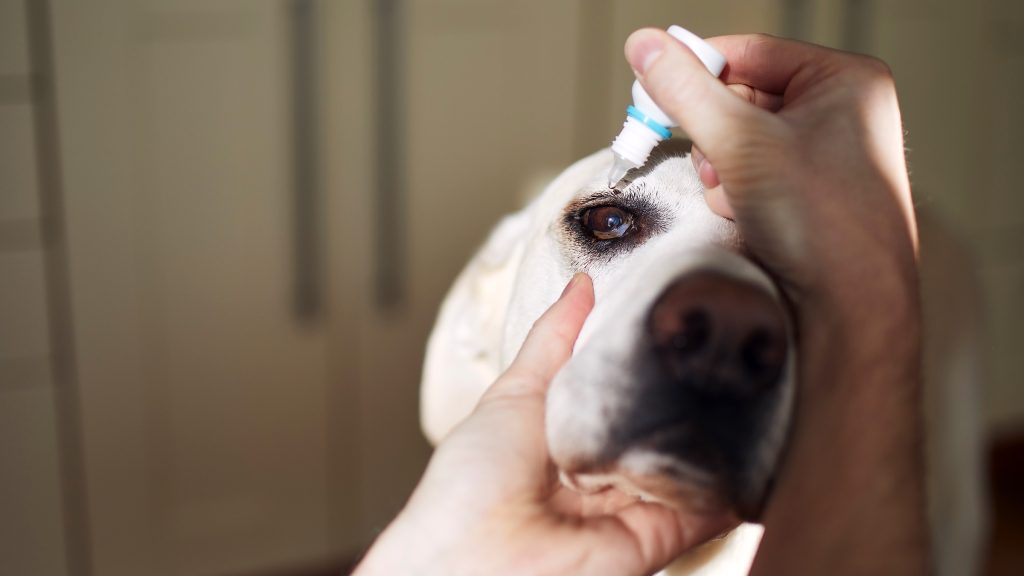Fleas and ticks are more than just a nuisance for pets; they can pose serious health risks that can lead to infections, disease transmission, and other complications. In 2024 and 2025, new treatments, both chemical and natural, have been developed to help combat these persistent pests. While fleas and ticks have been a common issue for pets for centuries, advancements in flea and tick prevention products have made it easier than ever to protect your furry companions.
In this article, we will discuss the latest flea and tick prevention methods and products, explore the differences between natural and chemical treatments, and provide expert advice on how to safely use flea and tick preventatives to keep your pet healthy and comfortable.
Latest Flea and Tick Prevention Methods and Products
In recent years, the pet care industry has made significant strides in developing more effective and safer products for flea and tick prevention. These advancements have focused on increasing effectiveness while reducing side effects, making it easier for pet owners to keep their pets protected year-round.
1. Oral Medications for Fleas and Ticks
Oral medications have become one of the most popular methods for preventing fleas and ticks in pets. These medications work by entering your pet’s bloodstream and making their blood toxic to parasites like fleas and ticks. Oral treatments have the advantage of being easy to administer (no need for messy topical treatments) and tend to be highly effective in preventing infestations.
Popular Products:
- NexGard: An FDA-approved chewable tablet for dogs that kills fleas and ticks for up to 30 days.
- Simparica: Another chewable tablet that provides up to 35 days of flea and tick protection.
- Bravecto: A chewable tablet that provides up to 12 weeks of protection against fleas and ticks in dogs, and a topical version for cats.
Benefits of Oral Medications:
- Long-lasting protection with a single dose
- Convenient and easy to administer
- Can protect against both fleas and ticks
Considerations:
- These medications are typically prescription-only, so you’ll need a vet’s recommendation.
- Some pets may have sensitivities or side effects, so it’s important to monitor your pet after administering the medication.
2. Topical Treatments
Topical treatments remain one of the most widely used methods for preventing and killing fleas and ticks. These are applied directly to your pet’s skin, usually between the shoulder blades, and they work by dispersing active ingredients over the pet’s body to repel and kill pests.
Popular Products:
- Frontline Plus: One of the most popular flea and tick topical treatments, providing protection for up to 30 days.
- Advantage II: This product targets fleas at all stages of their lifecycle and provides protection for up to a month.
- K9 Advantix II: In addition to fleas and ticks, K9 Advantix also repels mosquitoes, making it an excellent choice for areas where mosquito-borne diseases are a concern.
Benefits of Topical Treatments:
- Works quickly and effectively to kill fleas and ticks on contact
- Most are water-resistant, so they remain effective even after your pet gets wet
- Protects against a broad range of external parasites
Considerations:
- Some pets may have an allergic reaction to topical treatments, so it’s important to do a patch test first.
- These treatments can leave a greasy residue on your pet’s fur and skin.
- It may take several hours for the medication to absorb properly, so pets should be kept indoors during this period.
3. Flea and Tick Collars
Flea and tick collars have come a long way in terms of effectiveness and safety. Today’s collars release small amounts of insecticidal agents over time, providing continuous protection for your pet. Many new flea and tick collars are water-resistant and provide long-lasting protection.
Popular Products:
- Seresto Collar: This popular collar provides up to 8 months of protection against both fleas and ticks. It’s odorless and water-resistant, making it ideal for pets that spend a lot of time outdoors.
- Preventic Collar: Designed specifically to repel ticks, the Preventic collar is a highly effective choice for pets living in tick-prone areas.
Benefits of Flea and Tick Collars:
- Provides long-lasting protection without the need for frequent reapplication
- Easy to use and adjust
- Non-greasy and non-messy, unlike topical treatments
Considerations:
- Collars can be uncomfortable for some pets, especially if they’re not properly fitted.
- In rare cases, pets may experience irritation around their neck or throat.
- Some collars may not be effective in all regions or against all types of pests, so it’s important to choose one suited to your pet’s needs.
4. Spot-On Treatments and Sprays
Spot-on treatments and sprays are effective in killing fleas and ticks quickly. These products are sprayed directly onto your pet’s coat and skin, killing the parasites on contact. They are often used in conjunction with other preventive methods for a more comprehensive approach.
Popular Products:
- Adams Flea and Tick Spray: An effective spray that kills fleas, ticks, and mosquitoes on contact.
- Vet’s Best Flea and Tick Spray: A natural alternative to chemical treatments, using essential oils like peppermint and clove to repel fleas and ticks.
Benefits of Spot-On Treatments and Sprays:
- Provides immediate relief for pets already infested with fleas and ticks
- Easy to apply directly to the coat, especially for pets with shorter fur
- Some sprays also have a deodorizing effect to freshen up your pet

Considerations:
- Most sprays are not designed to last as long as oral medications or collars, so they may require more frequent applications.
- Some pets may be sensitive to certain ingredients, so it’s important to test a small amount first.
Natural vs. Chemical Treatments for Fleas and Ticks
When it comes to flea and tick prevention, pet owners are increasingly concerned about the potential side effects of chemical treatments, which has led to a rise in demand for natural alternatives. But how do the two compare?
Chemical Treatments:
Pros:
- Highly Effective: Chemical treatments are typically the most powerful option for eliminating fleas and ticks and preventing future infestations.
- Fast-Acting: Most chemical treatments act quickly to kill parasites on contact.
- Wide Range of Products: There are numerous options available, from oral medications to topical treatments and sprays.
Cons:
- Potential Side Effects: Some pets may experience side effects such as skin irritation, vomiting, or lethargy. Long-term use of chemical treatments may also lead to toxicity.
- Environmental Impact: Some chemical treatments can harm the environment or other animals if not disposed of properly.
Natural Treatments:
Pros:
- Gentler on Pets: Natural treatments tend to be gentler on your pet’s skin and overall health.
- Less Risk of Side Effects: Many natural remedies are free from harsh chemicals, reducing the risk of side effects.
- Safer for the Environment: Natural treatments are generally more eco-friendly.
Cons:
- Less Effective: Natural remedies may not be as potent as chemical treatments, making them less effective at killing fleas and ticks in severe infestations.
- Frequent Reapplication: Natural treatments often require more frequent reapplication than their chemical counterparts.
- Limited Options: While there are some excellent natural treatments, there are fewer available options compared to chemical-based products.
Popular Natural Flea and Tick Treatments:
- Essential Oils: Oils like peppermint, lavender, and eucalyptus are known to repel fleas and ticks. However, essential oils should be used with caution, as some can be toxic to pets, especially cats.
- Diatomaceous Earth: A powder made from fossilized algae, diatomaceous earth can be sprinkled around your home or yard to kill fleas and ticks without chemicals.
- Herbal Flea Collars: Some collars are infused with natural repellents like citronella, rosemary, or lemongrass, offering a chemical-free alternative.
How to Safely Use Flea and Tick Preventatives
Regardless of which flea and tick treatment you choose, it’s important to follow safety guidelines to ensure both your pet and your family stay safe.
1. Follow the Manufacturer’s Instructions
Always read and follow the instructions provided with the product. Dosage recommendations, frequency of application, and any special precautions should be clearly outlined by the manufacturer.
2. Monitor for Side Effects
After applying any flea or tick treatment, keep a close eye on your pet for any adverse reactions, such as skin irritation, excessive drooling, vomiting, or lethargy. If you notice any concerning symptoms, contact your veterinarian immediately.
3. Properly Dispose of Products
Certain flea and tick treatments, particularly topical ones, can contain ingredients that are harmful to the environment if disposed of improperly. Follow disposal instructions to minimize environmental impact.
4. Use a Combination of Treatments
In some cases, using a combination of treatments (e.g., a flea collar and oral medication) can provide more comprehensive protection, especially for pets with severe infestations. However, always check with your veterinarian before combining treatments to ensure safety.
5. Regularly Check for Fleas and Ticks
Even with preventive treatments, it’s still important to check your pet regularly for fleas and ticks, especially after they’ve been outside. Regular grooming and inspections will help you spot any issues early and prevent further infestations.
Conclusion
The fight against fleas and ticks has become easier and more effective thanks to the wide array of treatment options
available in 2024 and 2025. Whether you prefer oral medications, topical treatments, natural remedies, or a combination of these methods, there is a solution to suit your pet’s needs. The key is to choose the right treatment based on your pet’s lifestyle, any potential sensitivities, and your personal preferences, while always consulting with your veterinarian to ensure optimal care.
By staying proactive and informed, you can protect your pet from the discomfort and health risks posed by fleas and ticks, ensuring they live a happy, healthy life free from parasites.























































